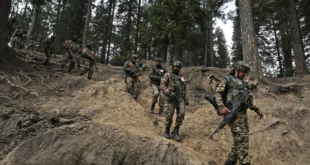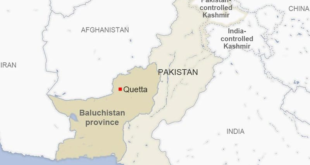A country’s prepared military has always been its guarantor of peace, along with the vigilance, wide-range training and preparedness. Thus preparing the state for unforeseeable circumstances and crisis that befalls upon. Pakistan’s tri-forces have conducted numerous exercises in in various regions, nationally and internationally. These exercises basically incorporate the peace efforts, and are not by any means a show of aggressive force posture. The peace time exercises promotes peace by preparing the state for encountering any kind of defensive acts, and creating strong deterrence. The history manifests that deterrence has always been a prime factor in avoidance of wars and establishing peace. Hence, such exercises become a guarantor of peace in the volatile south Asian region.
Numerous exercises have been conducted by Pakistan which includes the multinational naval exercises, Aman Exercise and the recent participation in multinational exercise Nusret 2021, with the purpose of strengthening Pakistan Navy’s hold in the Arabian Sea; Pakistan Army exercise Jidar-ul-Hadeed and Tasksheer-e-Jabal, for getting better grip in the desert and mountainous areas, multinational air exercise ACES meet 2021-1 and ACES meet 2021-2. The exercise included the airborne systems, fighter jets, early warning and control aircraft and the military satellites, with the purpose of improving the harmony and coordination between ground and air elements. The numerous exercises conducted by all the three forces of Pakistan helps in attaining perfection and preparedness in the desired areas and prepare the military for exceptional response under the conventional operation settings.
More than two decades have passed since overt nuclearization of Pakistan and India, but the importance of conventional deterrence in the maintenance of strategic stability still can’t be ruled out. India has always tried to exploit the threshold under the nuclear overhang, and has always tried to disturb the strategic stability by introducing limited war doctrines and other offensive postures, and through major progression in the offensive military technology. India, in its endeavor to achieve the regional hegemony has always tried to get in the way of strategic stability in the south Asian region. The limited war in south Asia could potentially be the conflict escalator and could lead to a full scale war, which could be disastrous for the two nuclear rivals. Hence, to let go off the chances of such consequences, the stability and credible deterrence at the lower rung is imperative for the peace and stability in the region.
Political planning and military preparedness is the key to the credible deterrence of a country. The purpose of deterrence is to delay the attainment of objective of the adversary by elongating the war and making the war unthinkable for the opponent. The conventional deterrence thus precludes the adversary form any misadventure, under the nuclear overhang.
In the evolving security situation in in south Asia, Pakistan is compelled to adopt a dual-track strategy for catering to the aggressive designs of the enemy at both conventional and unconventional level. The Full-Spectrum deterrence posture of Pakistan has been credible enough to deter the enemy at the unconventional level, but alongside that, Pakistan has to be fully prepared for any proactive war strategy or counterforce targeting by the enemy. In this regard, advanced training, exercises and operational readiness is immensely important for the security of the country. It is the result of such comprehensive trainings, vigilance and preparedness that Pakistan has successfully catered to India’s aggressive actions in 2019 Pulwama-Balakot crisis. The apt retort and the befitting response is the indication of country’s military preparedness, which is further strengthened through conventional military exercises.
Hence, to conclude, all the Indian military modernization encompasses apt response from Pakistan, and continuous military modernization and training in this regard helps attain strategic stability and deterrence stability in the region. The mutual vulnerability prevails when the two adversaries are capable enough to deter each other’s aggressive designs. A strong conventional deterrence ultimately creates anxiety and fear at the adversary’s end that the war would be costlier and unachievable, and could result into a humiliating defeat. The conventional imbalance in south Asia is aptly controllable for Pakistan, and the incessant exercises of all the forces of Pakistan’s military are tallying Pakistan’s capability for countering any future threat matrix.
 Eurasia Press & News
Eurasia Press & News



